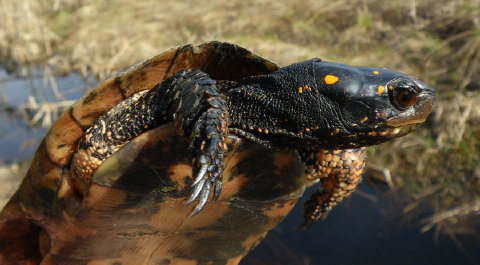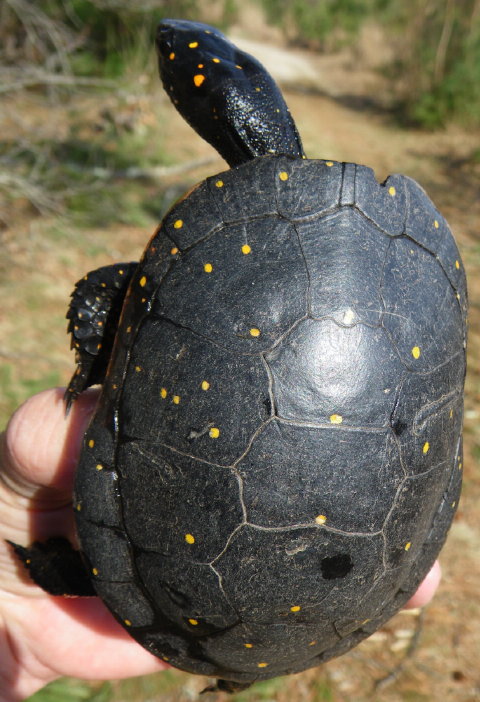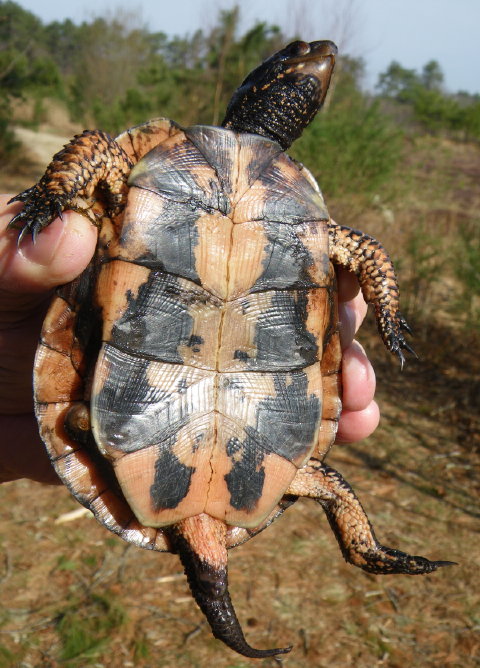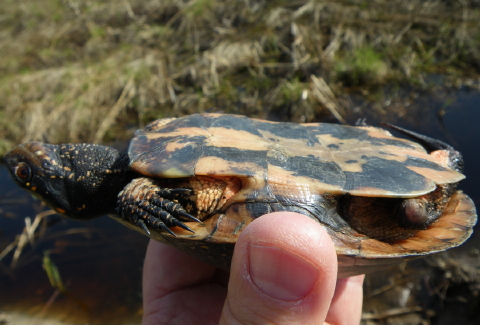Male Spotted Turtle #1 from Marion, MAÂ
Today dawned bright, beautiful and springtime warm. Turtle Journal checked an abandoned cranberry bog in Marion on the South Coast of Massachusetts for spotted turtle mating activity. Sure enough, four spotted turtles were basking on the bank of a shallow creek channel. As they heard our approach, turtles quickly slipped into the water and hid under the dense vegetation.
Carapace of Male Spotted Turtle #1
Twenty feet further along the creek, another basking spotted turtle tried the same escape trick, but without dense vegetative cover, he was easily netted. A quick look at his carapace confirmed that this spotted turtle had been marked #1; that is, the first spotted turtle captured in this wetlands in April 2006 by Sue Wieber Nourse’s advanced marine science class under a major research and education grant from the National Fish and Wildlife Foundation.
Plastron of Male Spotted Turtle #1
Spotted turtle #1 shows distinctive male characteristics: the long, thick tail with opening far beyond the shell and a concavity in the center posterior of the plastron.  Sexual dichromatism in spotted turtles is highlighted by this male’s drab colored neck as opposed to a female’s bright orange/yellow coloring.
Concavity of Male Spotted Turtle #1
This image illustrates the plastron concavity of spotted turtle males, as well as the drabber neck coloration.
Male Spotted Turtle “Looking for Love”
After a complete physical examination and the collection of shell measurements and weight, spotted turtle #1 was released to rejoin his friends in this springtime mating aggregation. Spotted #1 was 12 years old in 2006 and 16 years old today. There were no significant differences in linear measurements of length and width of carapace (top shell) and plastron (bottom shell). His weight in April 2006 was 160 grams and today he hit the scales at 174 grams.
Comparison of Male Spotted Turtle #1, 2006 to 2010
One very troubling difference between #1’s appearance in 2006 and today is the loss of most of his right rear limb. In 2006, we observed that this turtle had lost the claws on its right rear limb. Today, as you can see from the plaston images above, a large part of its right rear limb is missing. Still, upon release, as you can easily determine  from the video, his movement on land and swimming in the creek appeared unhampered by the injury.




